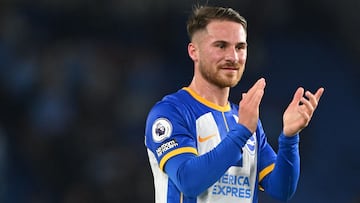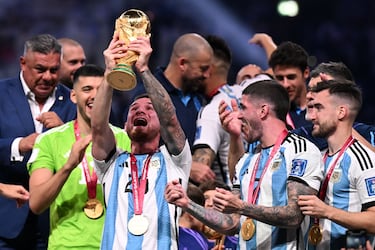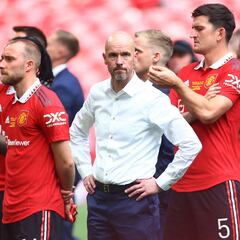How much did Alexis Mac Allister cost Liverpool from Brighton?
The World Cup winner is all but confirmed to be moving to Merseyside, so here’s a breakdown on everything we know about the deal.


The wheels are moving, the merry-go-round is spinning, and the windows have been slid open in the most dramatic of fashions, with everybody peering inside to see what’s going on (and to see if they can catch a glimpse of Fabrizio Romano’s WhatsApp). As other clubs fumble awkwardly through desk drawers for pens, paper and lighters to burn everything down, Liverpool have already made moves as the transfer market sets up its stalls across Europe, putting everything in place to sign Alexis Mac Allister from Brighton and Hove Albion.
The official announcement of the deal is yet to be plastered across social media channels, but all things point to the midfielder being a part of Jürgen Klopp’s squad next season. If, for some strange reason, the deal falls through and Mac Allister doesn’t sign for the club, then I hope you enjoy the heavily edited version of this article.
The release clause for Alexis Mac Allister is lower than reported £45/50m. ✨🇦🇷 #LFC
— Fabrizio Romano (@FabrizioRomano) June 5, 2023
This is why Liverpool feel this could be a bargain as they want to get documents signed this week after booking medical tests to be completed in 24/48h. pic.twitter.com/9OD6vRXNlb
How much has Mac Allister cost Liverpool?
Question number one: the money. It’s all about the money in the Premier League, and most clubs can afford not to be too picky over the pounds and pence of their deals. But that’s not to say that bargains can’t be had: if executives love one thing, it’s making money, and Liverpool appear to have found the perfect fit with Alexis.
The exact fees are unknown and will likely never come out to the public, but information slips out of pockets and mouths (as well as ferocious Tweeter, Romano - has someone checked to see if he is OK?) and as such, it is understood that this deal expected to have cost Liverpool a lot less than the £60 million fee that was initially reported; with the player having a release clause in his contract for a much lower amount, Liverpool can pay Brighton the money without the need to negotiate a price.

Where will Liverpool play Mac Allister?
The simple answer is in the middle of their strangely neglected midfield. It has been the topic of debate that has encased the entire season at Anfield, the fact that the midfield needs ‘a refresh’, and now it seems that the revolution has begun, with Keita, Oxlade-Chamberlain and Milner all leaving. Jordan Henderson may be very good at tapping his feet quickly before lifting a trophy, like a daring mouse scampering across hot sand, but that is going to happen less and less if the club are relying on their 32-year-old captain to still be the difference in the middle of the pitch. Fresh legs are needed.
Curtis Jones does not have the same problem when it comes to age like Henderson, give he is just 22-years-old, but the gap in talent between Mac Allister, who has scored 10 goals and got 2 assists last season, is an unquestionable jump forwards in terms of raw talent. The same goes for Bajcetic: he is a fantastic player and hugely talented, but he is not one for the here and now, unlike the World Cup winner that is set to join. Mac Allister’s arrival will take the pressure off of the younger figures to be the difference every time they are called upon.
10 - Alexis Mac Allister scored his 10th Premier League goal of the season, only the third Brighton player to reach double figures in a single campaign after Glenn Murray (2017-18 and 2018-19) and Neal Maupay (2019-20). Big. pic.twitter.com/3oOOxNAHf8
— OptaJoe (@OptaJoe) May 8, 2023
What will Alexis Mac Allister’s position be at Liverpool?
Related stories

Red Devils' revolution is underway
Mac Allister, under Potter, was initially meant to be a ball-winning, deep-lying midfielder in the Brighton side, something about which he commented to the press, saying he wanted “to kill” Graham Potter. With the addition of Moises Caicedo to the Brighton midfield, the necessity for the Argentine to be the best ball-winner in the league - which he was according to the numbers - was not as pressing. Under De Zerbi, Mac Allister was moved forward here he could have more of an influence on the attacking sequences of the side, something that benefitted Brighton greatly in the second half of the season as they pushed for Europe. Basically, Mac Allister can do it all very well.
Adapting to whatever role Klopp has in mind for Macca (can I call him that?) should not be a problem, given that he has played - and thrived - under Graham Potter and then Roberto De Zerbi, two coaches who, despite what Sam Allardyce might think, are at the forefront of tactics in elite-level football.
